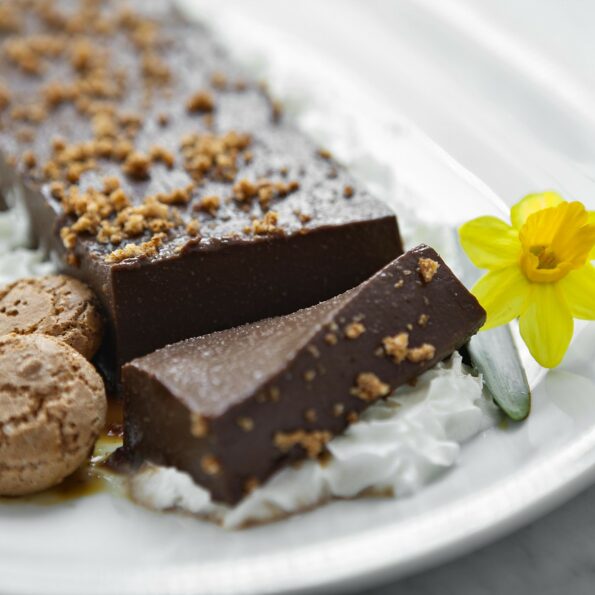
Bonet

Bonèt is the ancestor of pudding; no gelatine, no isinglass or thickeners. This dessert was very popular in southern Piedmont, where the term "bonèt" designated a cap in use since the 18th century in a circular shape with a central shaping. Others trace the term "bonèt" to the mold called "Benetta", made of tinned copper, in the shape of a circular crown with a central hole.
To accompany with a Malvasia di Casorzo DOC, Brachetto d'Acqui DOCG or Moscato d'Asti DOCG.
- 75 centilitri whole milk
- 200 grams crumbled dried amaretti biscuits
- 30 grams bitter cocoa
- 200 grams Sugar
- 6 eggs
- 1 bicchiere Marsala
- 50 grams granulated sugar
Mix the crumbled amaretti biscuits, the sugar, 5 whole eggs and 1 egg yolk, Marsala and the cocoa in a bowl. Beat the mixture carefully until it is smooth and sleek.
To prepare the caramel, place the sugar and a spoonful of water in a metal container (the copper “polsonetto”, a bain-marie pan with rounded bottom and a long wooden handle is ideal) and mix slowly and continuously with a wooden spatula. After a few minutes the sugar begins to melt and boil, forming a very fine foam. Remove from the heat and let it slightly cool before lining the mold.
In the traditional recipe, the bonèt must remain compact and not swell.
At this point, add the milk to the mixture, stirring continuously, and pour into the mold previously lined with caramel.
Cook the bonèt at bain-marie in a pre-heated oven for about 40 minutes, avoiding boiling or overflowing the water.
Among the best-known variants of this pudding we mention the addition of a small glass of coffee or a teaspoon of coffee powder, a few spoons of Rum or Cognac. The light version does not include cocoa and coffee but a vanilla pod boiled in the milk.
Unorthodox is the addition of isinglass or flour to increase its consistency or the addition of cream to increase its creaminess. Remove the bonèt from the mold, pour it onto a still warm tray and serve accompanied with biscuits.